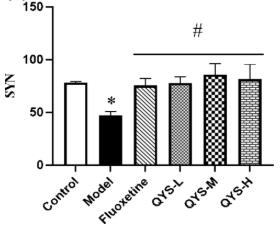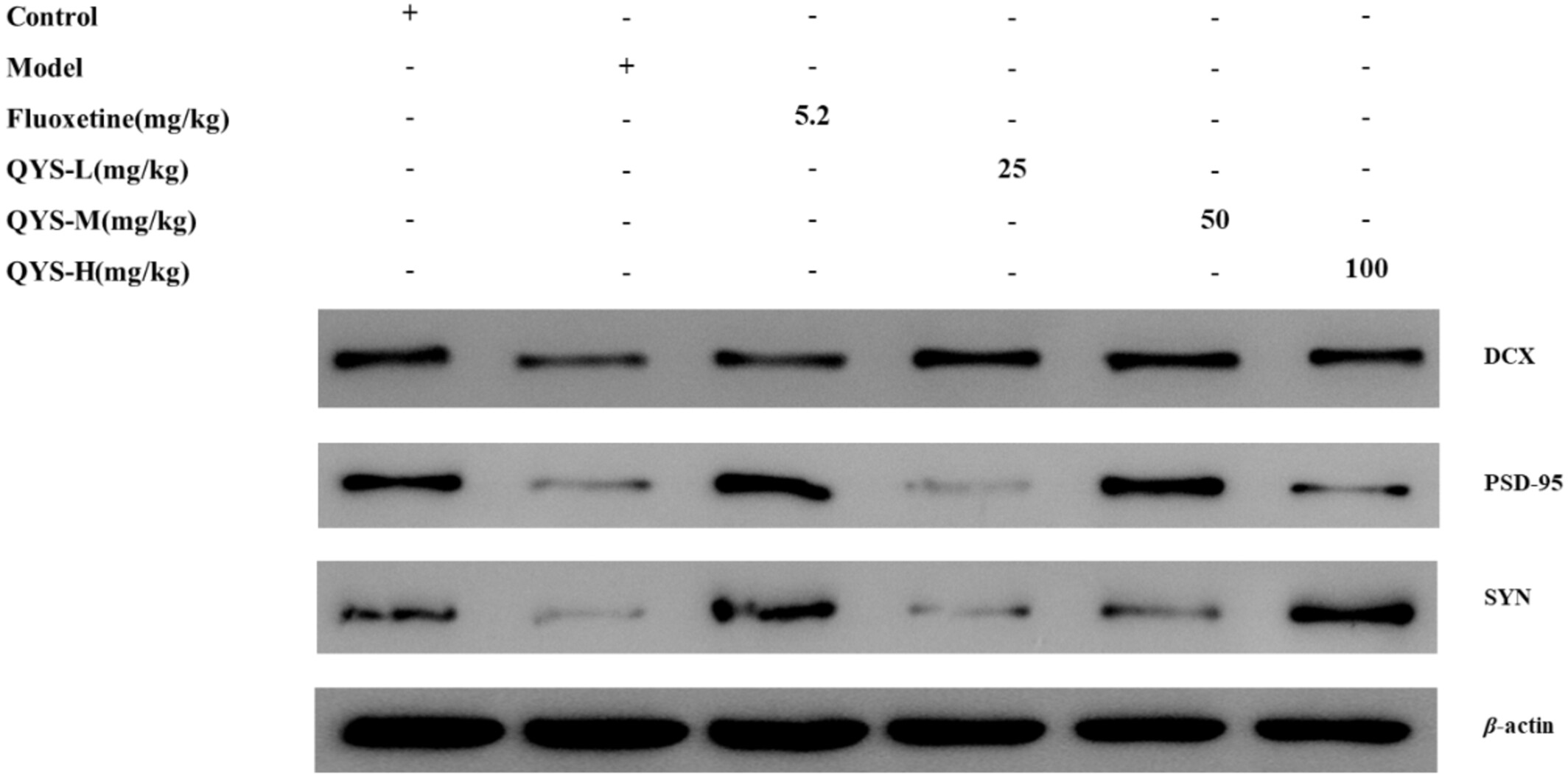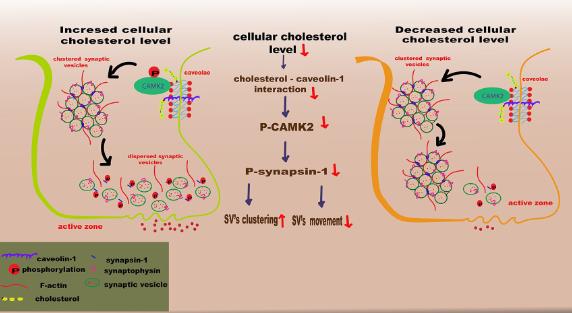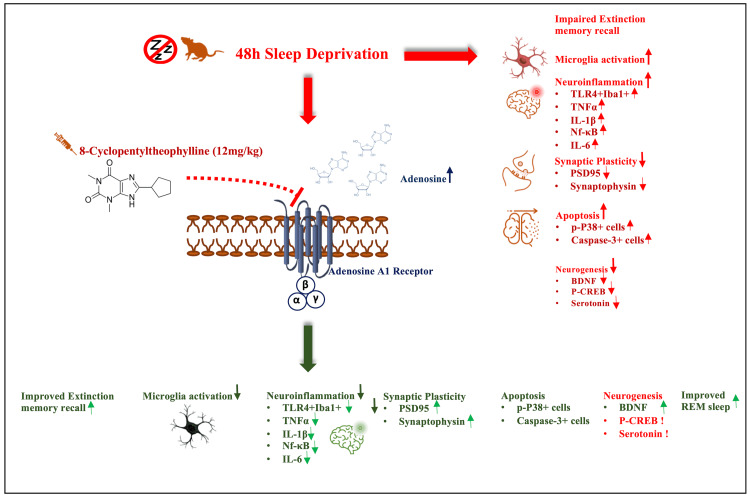SYP
-
Official Full Name
Synaptophysin -
Overview
Defects in SYP are the cause of mental retardation X-linked SYP-related (MRXSYP) [MIM:300802]. Mental retardation is characterized by significantly below average general intellectual functioning associated with impairments in adaptative behavior and manifested during the developmental period. -
Synonyms
Major synaptic vesicle protein P38;Syn p38;Synaptophysin;SYP;SYPH;SypI
Recombinant Proteins
- Human
- Rhesus macaque
- Rat
- Bovine
- Spermophilus citellus (European suslik) (Citellus citellus)
- E.coli
- Wheat Germ
- Mammalian Cells
- HEK293
- Mouse
- In Vitro Cell Free System
- His
- Non
- SUMO
- Avi
- Fc
Background
What is SYP Protein?
SYP, or synaptophysin, is an important brain protein located on synaptic vesicles—tiny bubbles that help neurons pass signals. Imagine it as a crucial piece of the brain's wiring, ensuring messages between neurons go through correctly. Since synaptophysin shows up where synapses are active, scientists use it to track synaptic activity. It plays a big role in how neurons talk to each other, which impacts learning and memory. Scientists focus on SYP to explore brain disorders like Alzheimer's or autism, where this communication might be disrupted, making it a hot topic in brain research.What is the Function of SYP Protein?
Synaptophysin, or SYP, is like the unsung hero in the neuron world. Its main gig is helping with the release of neurotransmitters, the chemicals that let neurons chat with each other. SYP is part of the synaptic vesicles—tiny sacs that store these neurotransmitters. When neurons need to send a message across synapses, SYP is crucial for getting the signal going. It's key to keeping communication in the brain smooth, impacting mood, memory, and more. By studying SYP, researchers can gain insights into brain disorders because any glitch in this process might cause problems like forgetfulness or mood swings.SYP Related Signaling Pathway
The synaptophysin (SYP) related signaling pathway is all about how neurons communicate in the brain. Think of SYP as a key player on the synaptic vesicles, which are like delivery trucks carrying neurotransmitters. When a neuron sends a signal, SYP helps release these neurotransmitters into the synapse, allowing the message to be passed to the next neuron. This process involves several other proteins and ions, all working in harmony to ensure smooth communication. The SYP pathway is crucial for normal brain functions like learning, memory, and mood regulation. If this pathway gets messed up, it can lead to neurological issues or diseases. Researchers study this pathway to find ways to fix or improve communication glitches in various brain disorders, offering hope for new treatments in the future.SYP Related Diseases
Synaptophysin, often referred to as SYP, is a protein that's pretty significant when it comes to our brain and nerve cells. Think of it as a key player in how neurons communicate. When things are off with SYP, it can relate to a bunch of neurological issues. For instance, in Alzheimer’s disease, a drop in synaptophysin levels often signals that nerve connections are breaking down. It’s kind of like when a city’s communication lines start failing, causing all sorts of confusion. Researchers also look at SYP in conditions like schizophrenia and autism, as changes in this protein might mess with how information is processed in the brain. So, while you might not hear about synaptophysin in everyday conversation, it’s a major focus in understanding and eventually tackling these complex brain disorders.Bioapplications of SYP
Synaptophysin, commonly called SYP, is really catching the eyes of researchers, particularly because it plays a big part in how our nerve cells communicate. In neuroscience, this protein is crucial for understanding conditions like Alzheimer’s. Scientists are digging into how shifts in SYP levels might hint at the early stages of these brain diseases, sort of like a signal that something's going wrong with those neuron connections. But that's not all—SYP is also proving useful in cancer research. It helps identify specific tumors, especially neuroendocrine ones, since it’s typically present in nerve tissues. Think of synaptophysin as a marker or a flag; by studying it, we might find new ways to diagnose and treat various disorders. It’s got a lot of potential packed into that little protein!Case Study
Case Study 1: Qurban A. et al. Front Biosci (Landmark Ed). 2025
Cholesterol deficiency in neurons is linked to synapse issues in Alzheimer's disease. This study altered cholesterol levels in SHSY-5Y cells by adjusting DHCR24 enzyme levels. Reducing this enzyme lowered p-CAMK2 and p-synapsin-1 levels, hurting synaptic vesicle (SV) movement and synapse function. It also dropped caveolin-1 and synaptophysin levels, crucial for synapse health. Boosting cholesterol reversed these effects, suggesting maintaining cholesterol is important for healthy synapses and could impact Alzheimer's progression.-
 Fig1. The representative Western blot of synaptophysin protein in low-expressing DHCR24 cells.
Fig1. The representative Western blot of synaptophysin protein in low-expressing DHCR24 cells. -
 Fig2. Representative Western blot analysis of synaptophysin protein for over-expressing DHCR24 cells.
Fig2. Representative Western blot analysis of synaptophysin protein for over-expressing DHCR24 cells.
Case Study 2: Wang J. et al. Animal Model Exp Med. 2025
Qingyangshen is a traditional remedy for stress-induced depression. It seems to boost brain plasticity, especially in the hippocampus. In stressed mice, Qingyangshen glycosides (QYS) improved depression-like symptoms by enhancing certain brain pathways. Mice with depression showed less interest in sugary water and decreased activity. After QYS treatment, they moved more and showed better interest, also increasing key proteins like DCX, PSD-95, and SYN that are vital for brain function and battling depression.-
 Fig3. Immunofluorescence expression of SYN.
Fig3. Immunofluorescence expression of SYN. -
 Fig4. DCX (doublecortin), PSD-95 (postsynaptic density protein-95), and SYN (synaptophysin) protein expression band.
Fig4. DCX (doublecortin), PSD-95 (postsynaptic density protein-95), and SYN (synaptophysin) protein expression band.
Quality Guarantee
High Purity
-
.jpg) Fig1. SDS-PAGE (SYP-0148R)
Fig1. SDS-PAGE (SYP-0148R) -
.jpg) Fig2. SDS-PAGE (SYP-6387H)
Fig2. SDS-PAGE (SYP-6387H)
Involved Pathway
SYP involved in several pathways and played different roles in them. We selected most pathways SYP participated on our site, such as Synaptic Vesicle Pathway, which may be useful for your reference. Also, other proteins which involved in the same pathway with SYP were listed below. Creative BioMart supplied nearly all the proteins listed, you can search them on our site.
| Pathway Name | Pathway Related Protein |
|---|---|
| Synaptic Vesicle Pathway | STX1B,SYN2,SYN3,DNM1L,CPLX2,PARK7,SYN1 |
-
 Fig1. Schematic illustration of how the loss of cellular cholesterol could disrupt synaptic vesicle mobility. (Atikam Qurban, 2025)
Fig1. Schematic illustration of how the loss of cellular cholesterol could disrupt synaptic vesicle mobility. (Atikam Qurban, 2025) -
 Fig2. CPT during sleep deprivation improved cognitive function, reduced inflammation, and boosted REM sleep, highlighting A1R's therapeutic potential. (Bhanuteja Thondala, 2024)
Fig2. CPT during sleep deprivation improved cognitive function, reduced inflammation, and boosted REM sleep, highlighting A1R's therapeutic potential. (Bhanuteja Thondala, 2024)
Protein Function
SYP has several biochemical functions, for example, SH2 domain binding,cholesterol binding,identical protein binding. Some of the functions are cooperated with other proteins, some of the functions could acted by SYP itself. We selected most functions SYP had, and list some proteins which have the same functions with SYP. You can find most of the proteins on our site.
| Function | Related Protein |
|---|---|
| transporter activity | AP4B1,LBFABP,SLC17A9,CSN1S1,STEAP2,MUP20,HIAT1A,ATP5G1,STEAP1,FABP7B |
| cholesterol binding | APOA4B.1,APOC3,STARD3,STARD6,ANXA6,APOE,CAV1,APOA1,SOAT1,OSBPL10 |
| SH2 domain binding | ARHGAP5,SH3PXD2B,GNB2L1,KHDRBS2,SHCBP1,NLK,SKAP1,JAK2,NUP62,AFAP1L2 |
| protein self-association | TNFAIP3,CNTN2,MALT1,SLC9A3R1,SVIP,ZFP639,CCDC88C,AGTR1A,CBR2,ZKSCAN17 |
| identical protein binding | SHANK1,SHMT2,KRTAP10-5,PIK3AP1,PIP4K2C,PFKL,CLDN3,FRS3,NFKB1,SMG9 |
Interacting Protein
SYP has direct interactions with proteins and molecules. Those interactions were detected by several methods such as yeast two hybrid, co-IP, pull-down and so on. We selected proteins and molecules interacted with SYP here. Most of them are supplied by our site. Hope this information will be useful for your research of SYP.
HTT
Resources
Related Services
Related Products
References
- Yang, JR; Liao, CH; et al. Transplantation of porcine embryonic stem cells and their derived neuronal progenitors in a spinal cord injury rat model. CYTOTHERAPY 15:201-208(2013).
- Santos, LD; Torres, RM; et al. In-house ELISA method to analyze anti-Trypanosoma cruzi IgG reactivity for differential diagnosis and evaluation of Chagas disease morbidity. REVISTA DA SOCIEDADE BRASILEIRA DE MEDICINA TROPICAL 45:35-44(2012).


